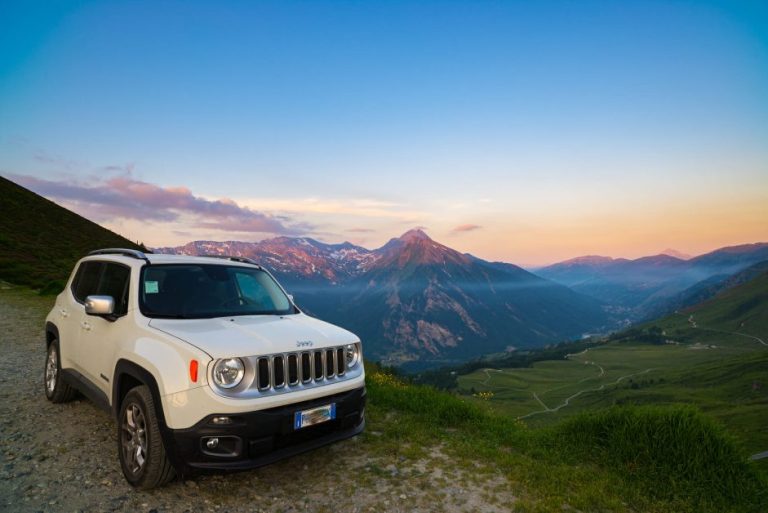What is a Willys Jeep and its History?
Discover the remarkable story of the Willys Jeep and its pivotal role in World War II.
With their unparalleled adaptability and reliability, these iconic vehicles became essential assets for the American military.
Join us on a journey through history as we explore the legacy of the legendary Willys Jeep.
what is a willys jeep
A Willys Jeep, specifically the Willys MB and Ford GPW models, was a successful American off-road military vehicle widely used in WWII.
It was the world’s first mass-produced four-wheel-drive car, with over 600,000 units built from 1941 to 1945.
Highly versatile and renowned for its toughness and durability, the Willys Jeep served various roles such as troop transport, reconnaissance, ambulances, and even command headquarters during the war.
It was a crucial and adaptable vehicle that played a significant role in military operations due to its customization options and utility in various terrains and combat situations.
Key Points:
- Willys Jeep, including Willys MB and Ford GPW models, was a successful American off-road military vehicle widely used in WWII.
- The world’s first mass-produced four-wheel-drive car, with over 600,000 units built from 1941 to 1945.
- Highly versatile and renowned for toughness and durability, serving roles like troop transport, reconnaissance, ambulances, and command headquarters during the war.
- Crucial and adaptable vehicle that played a significant role in military operations due to customization options and utility in various terrains and combat situations.
Check this out:
Introduction To The Willys Jeep In WWII
- The Willys MB and Ford GPW were highly regarded as iconic American off-road military vehicles during World War II.
- Over 600,000 units of these vehicles were mass-produced between 1941 and 1945, making them the first mass-produced four-wheel-drive cars globally.
- The Willys Jeep stood out for its versatility and durability, excelling in functions like troop transport, reconnaissance, and towing supply trailers.
- It became a vital asset for the Allied forces due to its adaptability, ruggedness, and reliability in combat situations.
- The Willys Jeep pioneered the concept of mounting weapons and other accessories essential for military operations, showcasing its utility beyond transportation.
- Its capability to navigate diverse terrains and endure challenging conditions made it an essential vehicle on the battlefield.
- The widespread adoption of the Willys Jeep by different armies and the development of modifications and field kits further underscored its significance and versatility for specific tasks and environments.
Production And Military Usage
The Willys MB and Ford GPW were produced in large numbers during WWII, with the Jeep becoming a staple in the US military and its allies’ fleets. Over 640,000 Jeeps were built, comprising a significant portion of the overall US military support vehicles used in the war. These vehicles served a multitude of roles, including transportation, reconnaissance, and combat support. The Jeep’s production numbers and deployment underscored its reliability and effectiveness in meeting the demands of wartime operations.
The Jeep’s production scale and deployment highlighted its impact in facilitating military logistics and operations during WWII. Its rugged construction and off-road capabilities made it well-suited for diverse missions, from carrying supplies to reconnaissance missions. The Jeep’s versatility and adaptability proved instrumental in navigating challenging landscapes and providing essential mobility for troops in various combat scenarios across theaters of war.
- Transportation
- Reconnaissance
- Combat support
Role In US Military And Allied Forces
- The Willys Jeep played a pivotal role in the US military and allied forces during World War II, serving as a versatile and dependable vehicle for a wide range of military tasks.
- From transporting troops to towing supply trailers, the Jeep’s agility and durability made it indispensable on the battlefield.
- Its ability to traverse rough terrain, withstand harsh conditions, and adapt to different roles underscored its versatility and importance in supporting military operations.
- The Jeep’s widespread use by the US military and its allies highlighted its valuable contribution to the war effort.
- Its reliability, ease of maintenance, and capability to operate in various environments made it a preferred choice for different military functions.
- The Jeep’s reputation for toughness and adaptability solidified its position as an iconic vehicle of WWII, symbolizing resilience and innovation in military transportation and logistics.
FAQ
What does Willys mean Jeep?
The name “Willys Jeep” originates from the decision to choose Willys-Overland Motors to produce a version of the vehicle initially designed by Bantam Car Company. Due to Bantam’s limited production capabilities, Willys was awarded the contract by the military in the late 1940s to manufacture these versatile and rugged vehicles. This collaboration led to the popularization of the term “Jeep” and the enduring association of the Willys brand with this iconic off-road vehicle.
What is the difference between a Jeep and a Willys Jeep?
The main distinction between a Jeep and a Willys Jeep lies in the off-roading capabilities and features they offer. While both share the iconic Jeep heritage, the Willys model comes equipped with additional off-roading features as standard, making it a more rugged and capable option for enthusiasts. The extra cost of the Willys variant reflects the value of these specialized off-road enhancements, providing a more premium off-road experience compared to the base Sport S trim.
In essence, opting for a Willys Jeep means investing in an off-road-ready package that elevates the Jeep experience by enhancing its performance in challenging terrain. This choice appeals to drivers seeking a more specialized and capable vehicle for their outdoor adventures, emphasizing the Willys’ focus on off-road prowess and rugged durability.
What is so special about a Willy’s Jeep?
The Willy’s Jeep stands out for its impressive off-road capabilities, featuring a Trac-Lok® Limited-Slip Rear Differential that enhances traction on challenging terrain. Additionally, its steel rock rails offer vital protection, allowing enthusiasts to conquer trails with confidence and durability. The combination of these features makes the Willy’s Jeep a top choice for those who seek adventure and rugged performance in their off-road journeys.
Why are they called Willys?
The name “Willys” is derived from John North Willys, a prominent figure in the early days of the American automotive industry. During the early 20th century, Willys-Overland, founded by Willys himself, held a significant position as the second largest automaker in the United States, following Henry Ford’s iconic Model T. This historical rivalry between Willys and Ford further solidified the significance of the Willys name in automotive history, as both brands competed for dominance in the market.
💡 Did You Know?
1. The Willys Jeep was originally designed in just two days by American engineer Delmar “Barney” Roos in response to the U.S. government’s urgent need for a rugged reconnaissance vehicle during World War II.
2. In the early 1960s, the United States Postal Service used modified Willys Jeeps as mail delivery vehicles due to their durability and off-road capabilities.
3. The name “Jeep” is rumored to have originated from the abbreviation “GP”, which stood for “General Purpose”, a term used to describe the vehicle’s versatile nature.
4. During WWII, the Willys Jeep was also produced by Ford Motor Company under the name “Ford GPW” to meet the high demand for military vehicles.
5. The Willys Jeep played a significant role in popular culture, appearing in numerous films, such as “M*A*S*H” and “Jurassic Park”, further solidifying its iconic status in American history.


